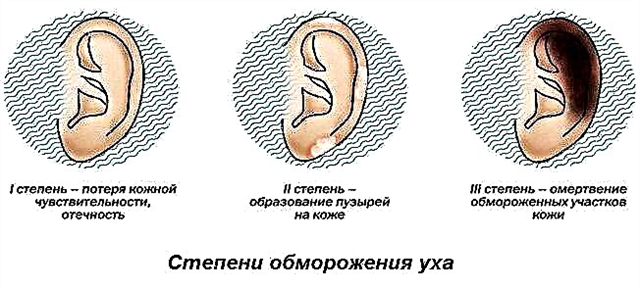Breathing through the nose is necessary and important. Nasal breathing is an active physiological process aimed not only at the flow of air into the lungs, but also at its preliminary release from mechanical impurities, pathogenic microorganisms. Due to the fact that the air passes through the nasal cavity, it reaches the underlying parts of the respiratory tract cleaned and warmed up - this helps to prevent numerous diseases. The activity of mucociliary transport as one of the most important defense mechanisms of the respiratory system depends on the activity of the ciliated epithelium and the characteristics of nasal mucus, and these parameters, in turn, are determined by the state of the nasal cavity. Proper cleansing is an integral part of the treatment and prevention of rhinitis, so it is important to know how to clear your nose at home and whether it is safe to do so.
To make the nose breathe
 Among the therapeutic non-drug measures aimed at improving nasal breathing, the most acceptable are:
Among the therapeutic non-drug measures aimed at improving nasal breathing, the most acceptable are:
- toilet nose;
- irrigation therapy.
The idea of a nasal toilet is to mechanically remove accumulations of mucus and crusts. Before removing the crusts, they should be softened. The definition of "nasal toilet" is closely related to the definition of "irrigation therapy", or nasal irrigation. The difference between them is that in the first case, various means for softening the crusts and cotton swabs can be used directly for removal. In the second case, irrigation and washing are carried out using medicinal solutions. There is a liquefaction of the nasal secretion, which facilitates its evacuation. The method is also used to prepare for the administration of various drugs - antibacterial, antihistamines, topical decongestants and topical steroids.
Washing removes mucus as well as allergens and pathogens.
Thus, the toilet, or nasal cleansing, is intended to quickly eliminate the elements obstructing breathing and accumulations of mucus from the anterior nasal cavity, and irrigation therapy allows you to clear the nose more deeply. Sometimes nasal toilet and irrigation therapy methods are considered identical concepts, since the purpose of the procedure is to cleanse the nasal cavity.
When cleaning is needed
Any procedures carried out with the aim of influencing the nasal cavity have both indications and contraindications. Cleaning your nose at home requires justification. If the mucous membrane of the nose is not covered with crusts, and there is a sufficient level of humidity in the room where the person is, you should not resort to it. When the nose breathes on its own without difficulty, active irrigation measures contribute to irritation of the mucous membrane, increase the risk of pathological changes in the auditory tube.
 What conditions make it necessary to clean the nose? They can be represented in the list:
What conditions make it necessary to clean the nose? They can be represented in the list:
- ARI (acute respiratory infections).
- Rhinitis of an allergic nature.
- Atrophic rhinitis.
- Adenoid hypertrophy, chronic adenoiditis.
- Chronic rhinosinusitis.
- Surgical interventions in the paranasal sinuses.
During the active phase of the inflammatory process, provoked by viruses of the respiratory group and various bacterial agents, nasal congestion of varying severity occurs. Deterioration of nasal breathing contributes to increased head pain, drying out of the mucous membrane of the lips and mouth. Studies carried out in various age groups have revealed that the regular implementation of irrigation measures makes it possible to reduce the volume and frequency of use of vasoconstrictor agents. During the procedure, the microbial and viral load on the mucous membranes is reduced, dust particles are mechanically washed out and inflammatory mediators are removed. A significant advantage is the activation of local immune mechanisms, moisturizing of the mucous membranes.
Cleansing the nasal cavity is necessary to remove provocative allergens.
It is known that the most effective way to deal with allergies is to prevent and stop contact with the substances causing the reaction. Therefore, washing is effective as a method of prophylaxis and therapy, helping to restore the work of mucociliary transport.
Another reason to learn how to clear the nose is to increase the viscosity of mucus and dry out the mucous membrane of the nasal cavity. The characteristics of the nasal secretion largely depend on the temperature, humidity and dustiness of the premises. When using heating devices, the air becomes dry and hot, and the humidity drops rapidly. Dust aggravates the influence of the listed unfavorable environmental conditions.
Conducting nasal irrigation
 How to clear your nose while at home? There are various ways of introducing the flushing agent. Among them, the most common:
How to clear your nose while at home? There are various ways of introducing the flushing agent. Among them, the most common:
- flushing with a syringe pear;
- flushing with a syringe without a needle;
- rinsing with a pipette.
Much depends on the age of the patient. For children, it is best to use containers that hold a limited but small amount of liquid - a regular pipette with a rubber bulb used to administer drops, or a bottle for nasal drops. A disposable syringe containing 1.5 ml of solution is also suitable.
Adult patients can use a rubber syringe. The volume of the rinsing solution is about 250 ml (for both halves of the nose). You can also use a syringe (eg 20 ml). The frequency of repetitions of the injection depends on what the solution is poured with.
Irrigation solutions
How to clean your nose at home? Can be applied:
- homemade products;
- pharmacy products.
To clean your nose as effectively as possible, saline solutions are suitable.
You can prepare them yourself or purchase them at the pharmacy. Pharmacy nasal irrigation products are available in drops, sprays and vials. One of the most affordable and popular drugs is saline - an isotonic solution of 0.9% sodium chloride. There are also combined products that are shown not only for mechanical cleansing - they have additional therapeutic effects (Rhinorin, which may include chamomile extract, dexpanthenol, Quix based on the water of the Atlantic Ocean, etc.). They should be used according to the instructions attached to each drug. Before starting treatment, you need to consult a doctor.
 The method for preparing a homemade saline solution is quite simple. You will need clean (better filtered) boiled water in the amount of 1 liter and table salt. A teaspoon of salt should be dissolved in prepared water. In this case, the resulting liquid should not be cold or hot, you should achieve a value of 35–40 ° C.
The method for preparing a homemade saline solution is quite simple. You will need clean (better filtered) boiled water in the amount of 1 liter and table salt. A teaspoon of salt should be dissolved in prepared water. In this case, the resulting liquid should not be cold or hot, you should achieve a value of 35–40 ° C.
The optimum solution temperature is close to body temperature.
You can pour some of the solution into a separate container, try the temperature with your finger, or check with a thermometer. It is best to prepare a fresh product every time. The saline solution is suitable for both children and adults.
Washing procedure
How to clean your nose properly? For adults, the following algorithm is suitable:
- With severe congestion, the nose is cleansed with a handkerchief or napkin, dosed administration of vasoconstrictor drops or sprays (Oxymetazoline, Xylometazoline).
- After the relief of nasal breathing, a few minutes later, rinsing is performed directly. To do this, the patient leans over the sink, draws saline solution into a syringe or syringe without a needle. The tip is inserted shallowly into the nostril upward and toward the inner corner of the eye.
- With the help of gentle pressing, the solution enters the nasal cavity from one side. At the same time, it should pour out from the other side. Each half of the cavity should be flushed 2 to 4 times.
How to clean your nose if the patient is a child? For small children, saline solutions are suitable in the form of drops, which can be injected 1-2 into each nostril every hour, if the instructions or prescriptions of the doctor do not provide otherwise. If we are talking about saline solution, there is no need to fear an overdose. When a syringe is used, a solution is also dripped from it.
Do not insert the tip of the syringe deep into the nose and press the plunger sharply.
The creation of a high pressure creates a risk of the rinsing fluid and the contents of the nasal cavity entering the auditory (Eustachian) tube. This becomes the cause of the development of the inflammatory process directly in the auditory tube and middle ear (eustachitis, tubo-otitis). Pressure precautions during the procedure are relevant at any age.



